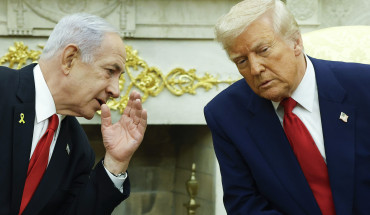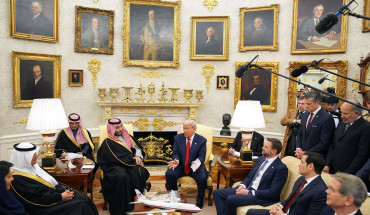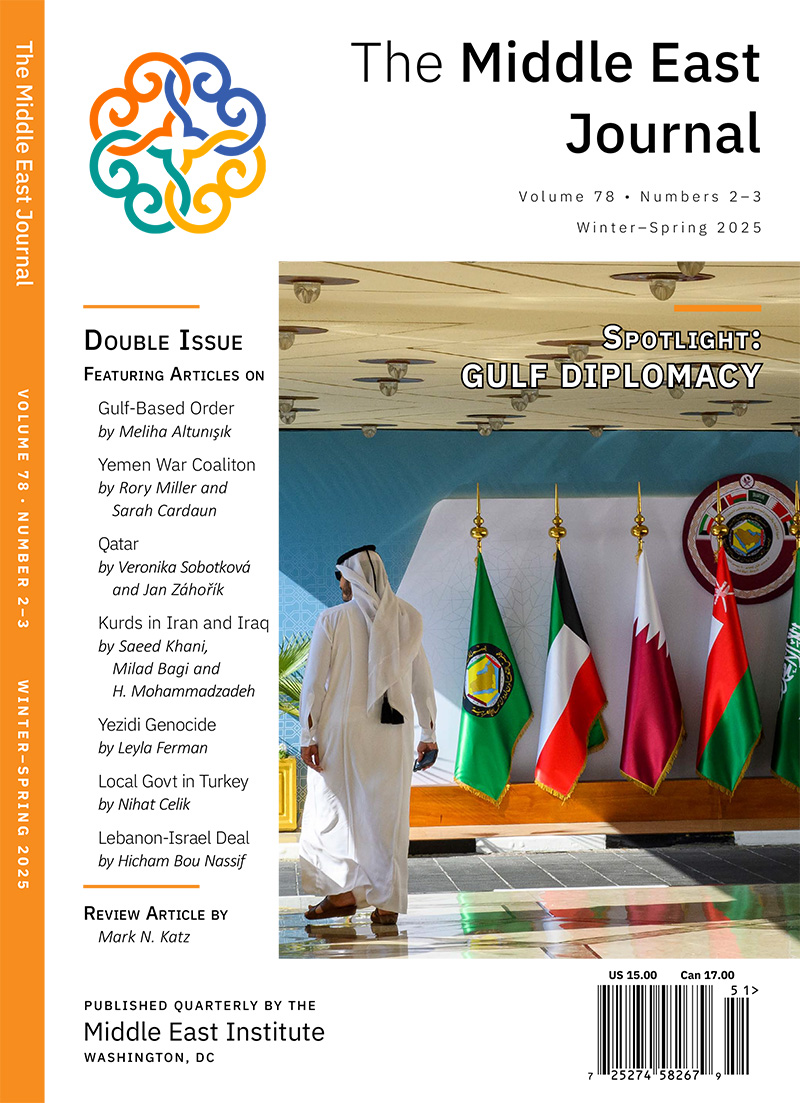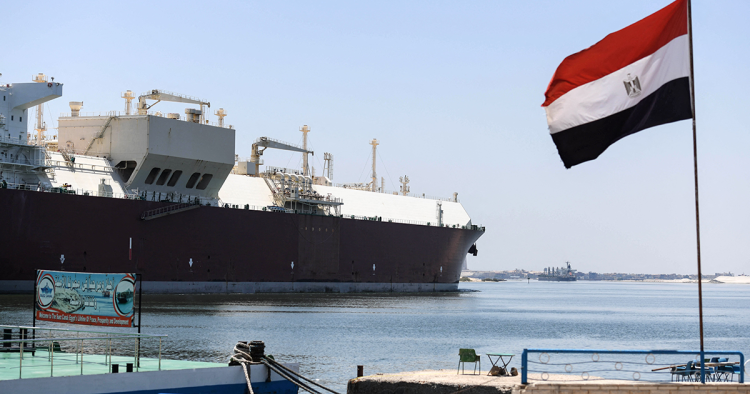At some point, most people will likely have seen or received a school report that reads something along these lines: “Commendable progress but has the potential to do better.”
That was roughly the gist of the long awaited — and much delayed — International Monetary Fund (IMF) staff report review of the $8 billion loan agreement it has with Egypt. That loan had supposedly been to help Egypt’s economy get back on its feet, after it had taken successive beatings from a series of external shocks, among them the COVID-19 pandemic and the Russian full-scale invasion of Ukraine. Those shocks had hacked away at the progress the economy had made since its earlier IMF loan in 2016.
The 2016 loan followed a particularly difficult period for Egypt’s economy. The impact of the January 2011 revolution was brutal: growth rates plunged from 7.1% a mere three years earlier to 1.8%, unemployment saw a corresponding rise, and investment rates fell. The next two years saw additional domestic and international trouble, and in 2016, Egypt reached a deal with the IMF, which agreed to a $12 billion loan. That program was declared a success, as Egypt stabilized its macroeconomic indicators, accelerated growth, and rebuilt its foreign currency reserves. Admittedly, it came at a steep domestic cost; IMF programs often necessitate cutting away more than just fat — poverty rates in Egypt rose to 5%, up from 2.6% four years earlier. A bigger problem, however, was that the program set in motion a chain of events that, in effect, led to the IMF becoming as much of a problem for Egypt as it was an aid. Egypt has never defaulted on a loan, but it needed to keep borrowing to support its huge import bill and to service the loans. Taking into account the state’s spending on large infrastructure projects intended to attract investment, the economy had to furiously chase opportunities just to keep from stalling, and by 2022, Egypt had to go back to the IMF for another agreement.
A thorough look at the economy
The latest report from that agreement, which was released almost exactly four months after the IMF wrapped up its review visit to Cairo last March, provided a thorough and unvarnished look at the current state of Egypt’s economy. In a nutshell, the IMF was pleased enough with the Egyptian government’s attempts to get the country back on its feet, in terms of achieving macroeconomic stability, to approve a disbursement of $1.2 billion of the $8 billion. Compared to the previous agreement, which provided $12 billion, it is a more modest figure, but the size of an IMF loan is often secondary to the stamp of approval that it grants. A disbursement indicates that a country is providing the necessary macroeconomic climate for investment and effectively hangs an “open for business” sign on the door. This latest mark of approval is no small feat considering the huge, and successive, external shocks of the past several years, but the assessment noted that there was still a long way to go on the required structural reforms. The IMF believes the state continues to play an outsized role in the economy, potentially hobbling the private sector and hampering Egypt’s chances at attracting foreign direct investment (FDI).
The report kicks off by noting significant improvements. The government has continued to implement key policies preserving macroeconomic stability. Although growth slowed to 2.4% in the fiscal year 2023/24, down from 3.8% the year before, it climbed back up to around 3.5% in the first quarter of the current fiscal year. Over the same period, while the current account deficit grew to 5.4% of GDP, the primary fiscal balance improved by a percentage point to 2.5% of GDP. That was a result of tight expenditure controls that had dramatically offset domestic revenue underperformance. Inflation, which had peaked at a staggering all-time high of 38% in September 2023, has seen a steady decline, currently down to 13.9%.
The impact of regional conflicts
That would be impressive under any circumstance but particularly in light of external issues. Egypt has been hit by one wave after another from regional conflicts. The report noted that “persistent and successive external shocks have complicated policy execution.” A surge of Sudanese refugees has flooded into Egypt since the start of the civil war there in April 2023. The United Nations High Commissioner for Refugees (UNHCR) said that Egypt had become the largest host country for Sudanese fleeing the conflict, with over 1.2 million as of November 2024. The Egyptian government’s own estimates on refugees are even more startling. It estimates that, as of January last year, the country was hosting 8-9 million refugees, 60% of whom had been in the country for a decade, and matters have been severely complicated by UNHCR slashing its funding.
Adding to international challenges, attacks in the Red Sea by Yemen’s Houthis (ostensibly to protest the Gaza conflict) have decimated one of Egypt’s most important — and previously most reliable — sources of foreign exchange: revenues from the Suez Canal. The Egyptian government estimates that it has hemorrhaged over $8 billion as of last March. Last year, according to the Suez Canal Authority, revenues came in at just $3.991 billion — a steep drop from its 2023 revenues of $10.25 billion. Transit trade volumes remain at about a third of pre-conflict levels, and that, in turn, produces negative impacts on growth and fiscal revenues.
However, two other pillars of hard currency generation have remained surprisingly robust: tourism and remittances from Egyptians overseas. While there had been significant resistance from successive governments to freeing up the exchange rate, once the government finally did get around to holding its nose and jumping, it saw notable results. According to the report, “the shift to a flexible exchange rate regime in March 2024 has continued to produce positive results: gaps with the parallel rate remain closed, backlogs of unmet import demands are eliminated, and trading in the interbank market has increased.” It did note, however, that the exchange rate fluctuates “within a limited range.”
Critical reforms delayed
The report introduces the IMF team’s real concern in a polite but pointed reference: “Progress with the implementation of the structural reform agenda was mixed, with notable delays on critical reforms related to divestment and leveling the playing field.”
That is a direct reference to, and criticism of, the Egyptian economy’s bête noir. The government has been dragging its feet on removing the state’s grip on the market, something the IMF has been recommending since 2016. The IMF noted that there had been limited progress on the sizeable ownership of state and military entities, both of which enjoy significant advantages in terms of tax exemptions, cheaper labor, and access to prime real estate. The report contains an assessment of the state’s ownership policy, first introduced in 2022, which laid out plans to exit certain sectors of the economy, including agriculture, livestock, construction, and hospitality. In total, public investment accounted for a staggering 74% of all investment. There aren’t separate figures for military-owned business as a sector of state ownership — in fact, the first IMF mention of military-owned industries was in 2021. Three years later, the IMF noted that the military owns 97 companies, of which 73% are in the industrial sector, a prime area for investment. According to the IMF’s assessment, the military currently has about a 36% market share in industries that would not normally be considered military specialties, among them marble, cement, and steel. More importantly, the commercial reach of these companies has continued to expand, despite the state ownership policy. That is particularly relevant because, “while military-owned companies might not hold a dominating share of a sector, competing with the armed forces may deter private investors given the privileges military-companies enjoy.”
Another point of concern, both for the IMF and for Egypt’s efforts to attract FDI, is that state efforts at divestment appear to have foundered. The third IMF review had projected $3 billion in privatization funds, but only $600 million has actually been achieved. Accordingly, the IMF agreed with Egypt on a revised timeline over the next two years — $3 billion in foreign currency during the coming fiscal year, which will go toward chipping away at the public debt, and then $2.1 billion in the final year. It is a sizeable target, considering that Cairo missed the last one, but it is also essential if Egypt wants to pull itself out of its financial quagmire. The government will need to divest from 11 state-owned companies by the end of this fiscal year, including four military-owned firms and two banks, through listings on the Egyptian Exchange. This echoes a June government announcement. Interestingly enough, though, the new list includes an additional military-owned company, perhaps signaling the government’s acknowledgement that it is do-or-die time. As Mada Masr notes, though, two of the military-owned companies have been slated for privatization since 2020 with no movement. According to government figures, there have been 21 privatization deals, with a revenue of almost $6 billion, but much of the work took place in 2023. Indeed, despite strong initial momentum in 2023, the IMF notes that the privatization of program dragged its feet in 2024. “Authorities announced 35 companies for sale in early 2023,” according to the report, “but have only divested, in most cases partially, from nine of them.”
Fighting for FDI
Attracting FDI has been a priority for successive Egyptian governments since the early 1980s, with varying degrees of success. However, the urgency had always been cushioned somewhat by a form of special protection that had been afforded Egypt. Simply put, its unique geostrategic location and regional heft made its security and stability a regional necessity. That ensured that financial safety nets were always on hand to prevent economic collapse. Those safety nets were generally provided by the Gulf countries, which viewed Egypt’s stability as integral to their own. After the 2013 coup that saw the removal of President Mohamed Morsi of the Muslim Brotherhood, following massive public demonstrations against him and the movement, Gulf countries pledged $12 billion to support the economy. However, a mix of new conditions has brought about a change in the Gulf states’ approach — a reassessment of their own financial situation, frustrations at a lack of perceived progress following decades of support, and differing regional perspectives have all resulted in a realignment of Gulf priorities. The new economic relationship with Egypt is driven by investment, rather than support. That means Egypt is in the same position as any other emerging economy fighting to attract FDI. And that fight is further complicated by factors aggravated, ironically enough, by IMF conditions, among them high interest rates, designed to combat inflation and attract “hot capital” — itself one of the Egyptian economy’s biggest vulnerabilities. External shocks have become impossible to ignore, as the slump in Suez Canal revenues clearly shows. And all of this comes as emerging markets ramp up their efforts to attract FDI. In other words, the pressure to perform has increased exponentially while conditions have become more challenging, even and time is running out.
While Prime Minister Mostafa Madbouly said last month that the shortfall was due in part to difficulties in assessing fair market value — a claim that is hard to gauge independently due to the lack of availability of public records, but is probably fairly reasonable — the progress to date is not nearly sufficient if Egypt wants to cut loose entities that have been a drag on the national purse and make headway toward plugging its considerable national debt. In fact, the IMF notes, meager returns from privatization contributed to a shortfall in the state budget’s projected primary surplus by the end of December 2024. The IMF granted a waiver on the condition that all privatization proceeds go toward ameliorating public debt.
The other major issue the IMF flagged was Central Bank lending and guarantees by the Finance Ministry to state-owned entities — a classic case of robbing Peter to pay Paul. Of particular note were loan guarantees to the Egyptian General Petroleum Company (EGPC) and the New Urban Communities Authority (NUCA), in light of Egypt’s rising expenditure in both industries. The IMF notes that government guarantees to EGPC alone constitute almost 18% of Egypt’s GDP, a situation further complicated by the fact that EGPC’s biggest client, the state-owned Egyptian Electricity Holding Company, is struggling to pay its bills.
Running out of runway
The Egyptian government appears to be taking all of this on board. A comprehensive restructuring plan for EGPC has been approved by Egypt’s Cabinet, according to the report. It has a clear timeline and an updated schedule of energy price increases “to provide a clearer roadmap” for fixing what ails the giant corporation.
There also appears to be a tacit understanding at the decision-making levels that, due to the reasons described earlier, the country is almost out of runway. Egyptian businesspeople have noted recently that there appears to be a greater openness toward the importance of the private sector. More importantly, it is becoming policy. A recent Ministry of Finance report provided to the author noted that public investment (which includes military investment) will now be capped at approximately 5.8% of GDP “to enforce fiscal prudence.” Tax revenue growth, which the IMF praised, was up 38% for July to March of the last fiscal year — a huge jump for a country that historically has had poor tax collection. The government has pushed a campaign to raise compliance without raising taxes, including forgiveness for late payment, and it has shown results. Private sector investment — vital if the sector is ever to achieve its thwarted potential — represented 59% of investment, according to the Ministry of Finance. That was a jump of 80% from the previous year — a figure that would be more heartening if it did not underscore how hobbled the sector had previously been. The ministry has also committed to tax facilitation packages and customs and property tax reforms, all of which had previously been pointed out by the private sector as impediments to investment.
Egypt is currently battling a series of domestic and foreign policy challenges, and economic health is a major bulwark against disaster. While the government realizes that investment in its economy — both domestic and foreign — is vital to its survival, it has struggled with both incentives and domestic challenges, many of which were self-imposed. There does, however, appear to be a shift in thinking, an understanding that Egypt can no longer rely on external bailouts. The Gulf countries have shifted to investment-only financial involvement; and absent returns on investment, the relationship will be significantly more transactional. The IMF report highlights those weaknesses but also the gains made and, more importantly, an understanding on the Egyptian government’s side of its predicament as well as a commitment to rectifying it. Egypt cannot control the regional instability that has so battered its economy, but it can control the degree of its vulnerability to external shocks with appropriate reforms. Economic growth is essential to Egypt’s stability. And if it is to achieve that growth, it will have to step up and grasp the opportunity.
Mirette F. Mabrouk is a Senior Fellow at the Midde East Institute.
Photo by AHMAD HASSAN/AFP via Getty Images
The Middle East Institute (MEI) is an independent, non-partisan, non-for-profit, educational organization. It does not engage in advocacy and its scholars’ opinions are their own. MEI welcomes financial donations, but retains sole editorial control over its work and its publications reflect only the authors’ views. For a listing of MEI donors, please click here.













